-

Manufacturer Good Price Potassium Hydroxide CAS:1310-58-3
Potassium Hydroxide : Potassium hydroxide (chemical formula :KOH, formula quantity :56.11) white powder or flake solid. The melting point is 360~406℃, the boiling point is 1320~1324℃, the relative density is 2.044g/cm, the flash point is 52°F, the refractive index is N20 /D1.421, the vapor pressure is 1mmHg(719℃). Strong alkaline and corrosive. It is easy to absorb moisture in the air and deliquescence, and absorb carbon dioxide into potassium carbonate. Soluble in about 0.6 parts hot water, 0.9 parts cold water, 3 parts ethanol and 2.5 parts glycerol. When dissolved in water, alcohol, or treated with acid, a large amount of heat is generated. The pH of 0.1mol/L solution was 13.5. Moderate toxicity, median lethal dose (rats, oral)1230mg/kg. Soluble in ethanol, slightly soluble in ether. It is extremely alkaline and corrosive
Potassium Hydroxide CAS 1310-58-3 KOH;UN NO 1813; Hazard level: 8
Product Name: Potassium HydroxideCAS: 1310-58-3
-
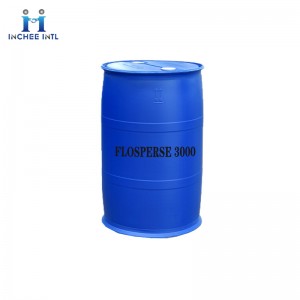
Manufacturer Good Price FLOSPERSE 3000 brand:SNF CAS:9003-04-7
FLOSPERSE 3000:SNF brand of anionic compounds.FLOSPERSE 3000 is a low -molecular weight polyacryonal, which is usually used for high -solid -phase decentralization system.FLOSPERSE 3000 is a neutral process auxiliary. Used to obtain high solid phases under low viscosity. With a wide pH value and temperature range, it has excellent flowing controllability. This product is very effective in clay, kaolin, calcium carbonate and other pigments, as well as in coatings containing these paint.
CAS: 9003-04-7
-
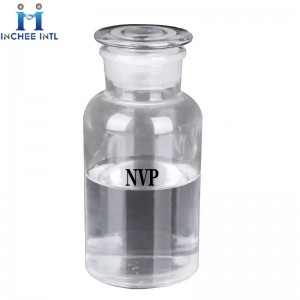
Manufacturer Good Price N-VINYL PYRROLIDONE (NVP) CAS 88-12-0
N-VINYL PYRROLIDONE (N-Vinyl-2-pyrrolidone) is referred to as NVP, also known as 1-vinyl-2-pyrrolidone, N-VINYL PYRROLIDONE. N-VINYL PYRROLIDONE is a colorless or light yellow transparent liquid with slight odor at room temperature, easily soluble in Chemicalbook water and other organic solvents. Because N-vinylpyrrolidone can increase various physical and chemical properties of products.N-VINYL PYRROLIDONE is widely used: in radiation medicine, wood floor industry, paper or cardboard industry, packaging materials, screen ink industry, the use of NVP improves the physical properties of products.
N-VINYL PYRROLIDONE (NVP) is commonly used as a reactive diluent for radiation curing in UV-coating, UV-inks, and UV adhesives. It is used as a monomer to produce water soluble polyvinylpyrrolidone (PVP) with uses in pharmaceuticals, oil field, cosmetics, food additives & adhesives. It is used in the manufacture of copolymers with, for example, acrylic acid, acrylates, vinyl acetate and acrylonitrile and in the synthesis of phenolic resins.
CAS: 88-12-0
-
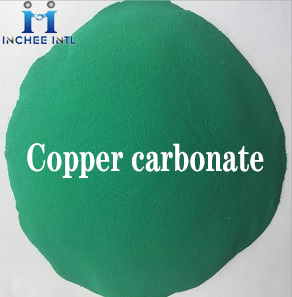
Manufacturer Good Price Copper carbonate CAS:12069-69-1
Cupric carbonate basic, also known as copper carbonate, is green, so it is also called malachite. It is a precious mineral gem. It is a substance caused by the reaction caused by the oxygen, carbon dioxide and water in copper and the air, also known as copper rust, and the color is green. Heating in the air will be decomposed into copper oxide, water and carbon dioxide. Solk in acid and generate the corresponding copper salt. It is also soluble in cyanide, ammonium and alkaline metal carbonate Chemicalbook aquatic solution to form a copper complex. When boiling in the water or heated in a strong alkali solution, brown copper oxide can be generated, and black copper oxide is divided into black at 200 ° C. It is unstable in the atmosphere of hydrogen sulfide, and can generate copper sulfide in reaction with hydrogen sulfide. A dozen forms of compounds have different forms of copper carbonate according to the ratio of CUCO3: H2O. It exists in the form of peacock in nature.
CAS: 12069-69-1
-
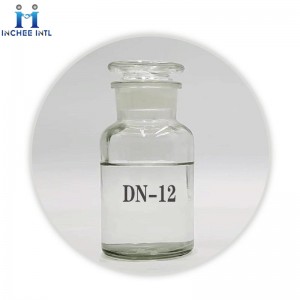
Manufacturer Good Price 2,2,4-Trimethyl-1,3-pentanediolmono(2-methylpropanoate) (DN12) CAS:25265-77-4
2,2,4-Trimethyl-1,3-pentanediolmono(2-methylpropanoate) is a volatile organic compound (VOC) being useful in paints and printing inks. As coalescent for latex paints, DN-12 finds applications in various fields including coatings, nail care, Printing inks, Solvents for cosmetics and personal care, plasticizers.DN-12 is also utilized as a coalescing agent to reduce the minimal film forming temperature (MFFT) during latex film preparation. Study using coupled capillary gas chromatography-mass spectrometry (HRGC-MS) has confirmed its detection in polypropylene packed food samples1. DN-12 is also employed in pharma industry. DN-12 may be further used in the prepare carbon nanotube (CNT) paste employed in field emission displays (FED).
2,2,4-Trimethyl-1,3-pentanediol monoisobutyrate (TMPD-MIB, texanol), a volatile organic compound (VOC), is an important component found in paints and printing inks. It is utilized as a coalescing agent to reduce the minimal film forming temperature (MFFT) during latex film preparation. Its detection in polypropylene packed food samples has been reported by coupled capillary gas chromatography-mass spectrometry (HRGC-MS). The performance of various dispersant affecting the dispersion of multi-walled carbon nanotube (MWCNT) in texanol has been studied.
CAS: 25265-77-4
-
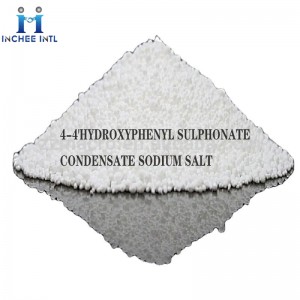
Manufacturer Good Price 4-4′HYDROXYPHENYL SULPHONATE CONDENSATE SODIUM SALT CAS:102980-04-1
4-4′HYDROXYPHENYL SULPHONATE CONDENSATE SODIUM SALT:The anionospense is a category of surfactants, which is characterized by generating water -hate anion in the water.
In the production of surfactants, anion surfactants are the first type of product with the largest output and the most varieties. It is not only the main active components of daily chemical detergents and cosmetics, but also widely used in many other industrial fields. Whether in the field of industrial or civilian fields, anion surfactants can play an important role.
CAS: 102980-04-1
-
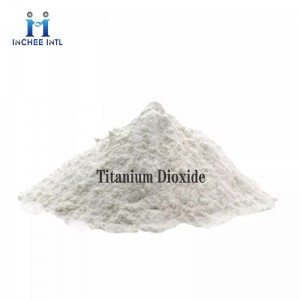
Manufacturer Good Price Titanium Dioxide CAS:1317-80-2
Titanium dioxide (or TIO2) is the most widely used white pigment in the industry, which is used in construction, industrial and automobile coatings; furniture, electrical appliances, plastic bands and plastic boxes are used; As well as special products such as ink, rubber, leather and elastic body.
Edible titanium dioxide, referred to as white pigment, non -toxic and tasteless. Flour, beverages, meatballs, fish balls, aquatic products, candy, capsule, jelly, ginger, tablets, lipstick, toothpaste, children’s toys, pet food and other white foods.
Titanium Dioxide CAS:1317-80-2
Product Name: Titanium Dioxide
Specification series: Titanium Dioxide R996; Titanium Dioxide R218; Titanium Dioxide TR92;Titanium Dioxide R908CAS: 1317-80-2
-

Manufacturer Good Price Glacial Acetic Acid CAS:64-19-7
Acetic acid is a colourless liquid or crystal with a sour, vinegar-like odour and is one of the simplest carboxylic acids and is an extensively used chemical reagent. Acetic acid has wide application as a laboratory reagent, in the production of cellulose acetate mainly for photographic film and polyvinyl acetate for wood glue, synthetic fibres, and fabric materials. Acetic acid has also been of large use as a descaling agent and acidity regulator in food industries.
CAS: 64-19-7
-

Manufacturer Good Price P-TOLUENESULFONYLISOCYANATE (PTSI) CAS 4083-64-1
P-TOLUENESULFONYLISOCYANATE (PTSI) is a single functional isocyanate. P-TOLUENESULFONYLISOCYANATE (PTSI) has high activity and can react with conventional diisocyanates, such as TDI and HDI, with water in polyols and solvents. The resulting carbamate does not increase the viscosity of the system. The disadvantage is that the toxicity of oxazolidine and other dehydrants is large; P-TOLUENESULFONYLISOCYANATE (PTSI) reacts with water to produce carbon dioxide and toluenesulfamide, so P-TOLUENESULFONYLISOCYANATE (PTSI) cannot be used directly in paint formulations and is generally used for pre-dehydration. To remove 1g of water in the solvent, about 12g of PTSI is theoretically required, but the actual amount should be higher than this.
CAS: 4083-64-1
-
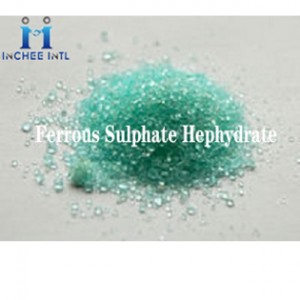
Ferrous sulfate heptahydrate CAS:13463-43-9
Ferrous Sulphate Hephydrate: Green vitriol, FeSO4.7H20, has been known since the thirteenth century ; it crystallizes from solutions of iron or iron bases in dilute sulphuric acid. The heptahydrate forms green monoclinic crystals of density 1·88, very soluble in water (296 g litre-1 FeS04 at 25°C). By precipitating the aqueous solution with ethanol, heating the heptahydrate to 140° in vacuo or by crystallizing it from 50 % sulphuric acid, the white monohydrate is obtained. This can be further dehydrated to the white, amorphous FeSO4 by heating to 300° in a current of hydrogen. At red heat the sulphate decomposes : 2FeS04 -> Fe203+S02+S03 A tetrahydrate, FeS04.4H20, crystallizes from aqueous solutions above 56°.
CAS: 7720-78-7






